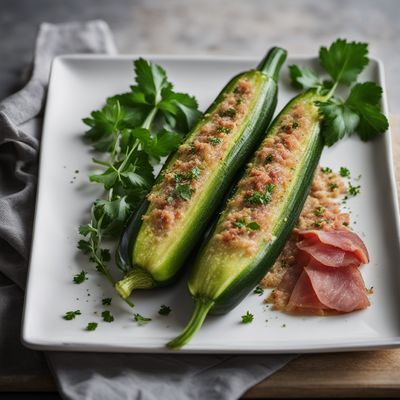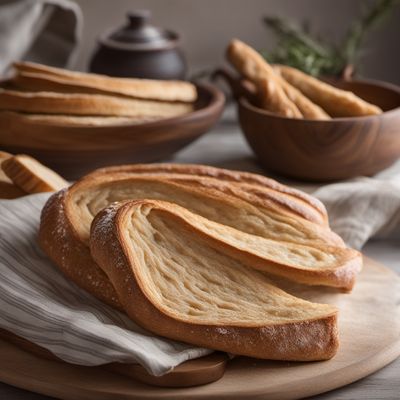
Recipe
Asturian Kotonjata
Delicious Asturian Kotonjata: A Sweet Delight from the Northern Spanish Coast
4.5 out of 5
Asturian Kotonjata is a traditional dessert from the Asturian cuisine, hailing from the northern coast of Spain. This sweet delicacy is made with a combination of local ingredients and traditional cooking techniques, resulting in a delightful treat that is loved by locals and visitors alike.
Metadata
Preparation time
10 minutes
Cooking time
50 minutes
Total time
60 minutes
Yields
6 servings
Preparation difficulty
Easy
Suitable for
Vegetarian, Gluten-free, Nut-free (if nuts are omitted), Egg-free, Halal
Allergens
Milk, Nuts
Not suitable for
Vegan, Dairy-free, Paleo, Keto, Low-carb
Ingredients
In the original Croatian version of Kotonjata, the dessert is typically made with almonds and flavored with rosewater. However, in this Asturian adaptation, the almonds are replaced with local nuts such as walnuts or hazelnuts, and the rosewater is substituted with cinnamon and lemon zest. These changes give the dish a distinct Asturian flavor profile while still maintaining the creamy and comforting nature of the original. We alse have the original recipe for Kotonjata, so you can check it out.
-
1 liter (4 cups) whole milk 1 liter (4 cups) whole milk
-
200g (1 cup) Arborio rice 200g (1 cup) Arborio rice
-
200g (1 cup) granulated sugar 200g (1 cup) granulated sugar
-
1 cinnamon stick 1 cinnamon stick
-
Zest of 1 lemon Zest of 1 lemon
-
100g (1 cup) chopped walnuts or hazelnuts 100g (1 cup) chopped walnuts or hazelnuts
Nutrition
- Calories (kcal / KJ): 350 kcal / 1465 KJ
- Fat (total, saturated): 10g, 3g
- Carbohydrates (total, sugars): 60g, 30g
- Protein: 8g
- Fiber: 1g
- Salt: 0.1g
Preparation
-
1.In a large saucepan, combine the milk, rice, sugar, cinnamon stick, and lemon zest.
-
2.Place the saucepan over medium heat and bring the mixture to a gentle simmer.
-
3.Reduce the heat to low and let the mixture simmer, stirring occasionally, for about 45-50 minutes or until the rice is cooked and the mixture has thickened to a creamy consistency.
-
4.Remove the saucepan from the heat and discard the cinnamon stick.
-
5.Transfer the mixture to a serving dish or individual ramekins.
-
6.Sprinkle the chopped nuts evenly over the top of the Kotonjata.
-
7.Allow the dessert to cool to room temperature, then refrigerate for at least 2 hours or until chilled.
-
8.Serve Asturian Kotonjata chilled and enjoy!
Treat your ingredients with care...
- Rice — Use Arborio rice for its creamy texture and ability to absorb flavors.
- Cinnamon stick — Break the cinnamon stick in half to release more flavor during cooking.
- Lemon zest — Use a microplane or fine grater to zest the lemon, avoiding the bitter white pith.
Tips & Tricks
- For a creamier texture, stir the Kotonjata occasionally while it simmers.
- Adjust the sweetness by adding more or less sugar according to your preference.
- Experiment with different nuts such as almonds or pine nuts for a unique twist.
- Serve Asturian Kotonjata with a sprinkle of ground cinnamon on top for an extra flavor boost.
- To make it more festive, garnish with a drizzle of honey or a sprinkle of powdered sugar.
Serving advice
Serve Asturian Kotonjata chilled as a delightful dessert after a hearty Asturian meal. It pairs well with a cup of strong Asturian coffee or a glass of chilled cider.
Presentation advice
When serving Asturian Kotonjata, use individual ramekins for an elegant presentation. Sprinkle the chopped nuts on top and garnish with a dusting of cinnamon or a fresh mint leaf for a pop of color.
More recipes...
For Croatian cuisine » Browse all
More Croatian cuisine dishes » Browse all

Fuži s tartufima
Fuzi s tartufima
Fuži s tartufima is a traditional Croatian dish that is made with homemade pasta and truffles. It is a rich and flavorful dish that is perfect for...

Šokačka salata
Šokačka Salad
Šokačka salata is a traditional Croatian dish that is perfect for a summer barbecue or picnic. It is a simple yet flavorful dish that is easy to...

Makovi külinji
Poppy seed kulinji
Makovi külinji is a traditional Slovenian dessert that is perfect for a sweet treat. The dish is made with poppy seeds, sugar, and a variety of spices.








